Thursday, May 21, 2009
Tuesday, April 21, 2009
Tutoring: Line Weight
Next week during the next tutoring session with Nathan I want to sort of bring alot of what we worked on the previous three sessions together and also work on some basics. I want to draw the human figure a few times, with emphasis on line weight and boldness. It is important that Nathan learns to weight his lines correctly to emphasize the shapes of things and we will work on that during our next session. Every good artist has a very confident stroke, with thick bold lines as well as thin detail lines. We will work on what Nathan wants to master, facial structure, animals, and body structure, but we will incorporate some principles of design into this upcoming lesson.
Friday, April 17, 2009
Tutoring: Animals
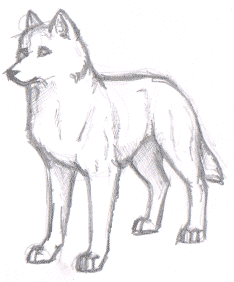
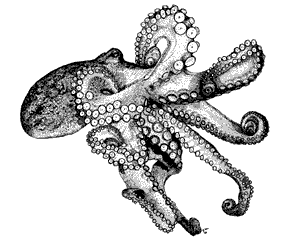 During the previous lesson we discussed the rendering of animals and so for the upcoming one I think that should be a focus of what we work on. The wolf is a good style for Nathan to learn from because of the focus on bold and thick lines. It is important to have line weight in different parts of an animal to accentuate the overall shape. The second picture is a photo of an octopus that could be turned into an intricate and complex pencil drawing.
During the previous lesson we discussed the rendering of animals and so for the upcoming one I think that should be a focus of what we work on. The wolf is a good style for Nathan to learn from because of the focus on bold and thick lines. It is important to have line weight in different parts of an animal to accentuate the overall shape. The second picture is a photo of an octopus that could be turned into an intricate and complex pencil drawing.
Monday, March 30, 2009
Tutoring: Superhero Men and Women Proportions
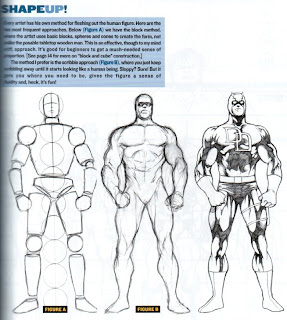
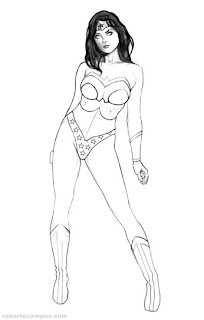
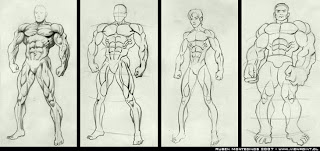
Last week during tutoring we discussed how the next goal for my student was to be able to draw the human bod with good proportions. He wanted to be able to draw men and women with proper muscle structure and proper size. These three pencil drawings are good examples of good proportions with the exception of the last drawing to the right on the bottom picture.
Tuesday, March 24, 2009
Tutoring: Women's Faces
Examples of girl's faces at relatively simple angles. These are all fairly simple and straightforward photos of girl's faces but I think they will be instrumental in my student learning how to draw and master such things as lips, eyebrows and jawlines for women. Those were his noted trouble areas, but if he keeps drawing from photographs of women, he will improve and will be able to draw a basic woman's face from memory eventually and that is the goal.
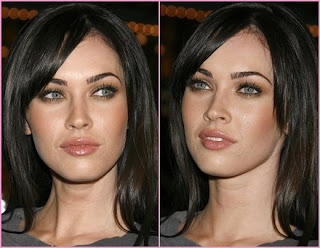





First Tutoring Session
Last Thursday. March 19th, was the first tutoring and I made some changes to the original plan during this session. My student is very intent on learning a number of things, and I have decided to attempt to teach him how to draw certain things, rather than a wide "how-to-draw" curriculum. He wants to learn to draw better women, animals, and more realistic proportions on his people. I consider myself good at proportions and women, so I feel like I actually have something to contribute on those subjects. Animals are not a particular strong point for me, but I can still help. We mostly worked from various "how-to-draw" books that he bought, and I decided at the end of the session that it was time to take the realistic next step from the copying from the books, copying from photographs. Copying from a drawing book is fairly basic, but with a photograph you have to make your own judgement calls about lights and darks and where to put the lines. I wouldn't consider drawing from a "how-to-draw" book drawing from a reference, but I definitely would consider drawing from a photograph to be that. If my student is going to take the next step then he needs to start drawing from photos and then drawing from life. If he becomes competent at drawing from references, I think that it will become easier for him to master the "manga" style of art that he is really trying to achieve. If someone can draw realistically, it is much easier to draw in a cartoon style because you then know what proportions and features to exaggerate. This Thursday I gave him a homework assignment to draw girl's faces from photographic reference and I am going to bring in a few photographs of women and animals to draw quick sketches off of. This will be the first step in him becoming able to whip up a drawing without needing a specific reference.
Monday, March 16, 2009
Advanced Lesson Plan
Stage 1: Assessment of Ability
The first part of the lesson involves finding potential strengths as well as potential weaknesses in my student's abilities. I will ask for three drawings to be created, a drawing of a person, a drawing of a small still life setup, and a drawing of a building. These will be simple sketches, taking five to ten minutes to create each.
Stage 2: Improvement of Weaknesses
After drawing three sample pieces, my student and I will pick the one that we agree needs the most work and we will focus on improving his technique in this area for the next couple classes. I will bring "how-to" manuals on improvement of this area and I will also try and lend my skills to helping improve his technique.
Stage 3: Assessment of Improvement
At the end of the first day, we will have created three sketches, as well as a few sketches of the area that needs improvement. At the end of the session, we will step back and review what has been learned over the course of the lesson. We will discuss the plan for next lesson, what worked and what didn't and I will assign some sort of small homework involving making a drawing or two for the next week's session.
The first part of the lesson involves finding potential strengths as well as potential weaknesses in my student's abilities. I will ask for three drawings to be created, a drawing of a person, a drawing of a small still life setup, and a drawing of a building. These will be simple sketches, taking five to ten minutes to create each.
Stage 2: Improvement of Weaknesses
After drawing three sample pieces, my student and I will pick the one that we agree needs the most work and we will focus on improving his technique in this area for the next couple classes. I will bring "how-to" manuals on improvement of this area and I will also try and lend my skills to helping improve his technique.
Stage 3: Assessment of Improvement
At the end of the first day, we will have created three sketches, as well as a few sketches of the area that needs improvement. At the end of the session, we will step back and review what has been learned over the course of the lesson. We will discuss the plan for next lesson, what worked and what didn't and I will assign some sort of small homework involving making a drawing or two for the next week's session.
Thursday, March 12, 2009
Lesson Plan #1
The objective, in my opinion, of today's tutoring session is assessment of ability. I want to find out where my student is in terms of talent and technique and from there make further lesson plans. On this first day I plan to have my student draw a few quick exercises and I can make a basic assessment. We will draw a person, a background, and a still life-type composition. Once we figure out what needs work, we can work on perfecting the form. I also want to find out from him what he feels is his weak point, what he wants to work on. Today is the introduction and the overall assessment of what works for him and what doesn't. I plan on bringing a couple "how-to-draw" books and perhaps a comic with simplistic style art. I will try and stress the importance of constant practice and repetition to acheive perfection of form. I will also try to show my student how important it is to reference from photographs or other sources when drawing something difficult. I hope that I am able to connect with my student and I truly hope that I will be able to teach him at least something of value today that he can use when drawing even when I'm not around. I do not know anything about what he wants other than that he draws cartoons and hopefully we can work on improvement of his form. If I can acheive proper assessment today, next Thursday will be alot easier because I will have an idea of what he needs and what he wants to do. My criteria for assessment will be based upon three things, proportion, composition, and technique. I will find his weakest point and that is what we will work on for the next few lessons.
Thursday, February 26, 2009
Tuesday, February 24, 2009
Thursday, January 22, 2009
Monday, January 12, 2009
Midterm Exam - Part 2
2. How does the work in our concentration demonstrate the exploration of your idea?
The work in my concentration displays my desire to refine a "comic-book" style of art because all of the pieces in my concentration are all part of one big piece. All my pieces tie together and create a ten-page story. This definitely displays the exploration of my idea, because instead of having ten "pin-up" drawings of various people that are unrelated, I have ten cohesive pages that flow together and create a story with a beginning, middle, and end. Each page took at least four hours, with some pages taking up to eight hours, but it really shows. Each page was drawn up with stick figures first, then penciled lightly, then penciled darkly, then traced in black ink to create a professional looking black and white comic book.
I think that this year my area of concentration really represents my artistic direction for the first time ever, in previous years my concentration has always been a random collection of decent art that I threw together at the last minute, this year, I thought of an idea for my concentration and I followed through with it, creating exactly what I wanted to. I was able, for once, to create something that I am proud to share and proud to say represents my area of concentration in art. I think that someone who wants to draw comics created a ten page comic for their ten page area of concentration is very fitting and definitely shows some patience, determination, and skill.
My comic is inspired by artists such as Dave Mazzuchelli, John Romita Jr. and Frank Miller, all of whom I have commented on earlier in this blog in separate posts. Some of the more difficult things about creating this comic book were inking it, which could be very difficult because there was no room for error. Also, pencilling some of the combat positions was very difficult, especially those from weird angles. I found that I had to get everything right before inking it though, because I would never want to ink over something that I thought to be anatomically incorrect, because I would feel like I was cheating myself by not doing my best. My own sense of perfectionism sometimes was the thing that made me take much longer than I thought I should take on some pages. Page five is a prime example of such perfectionism creating alot of work for me. In the bottom panel of page four, I created a giant jungle scene that the hero, Stopwatch, has fallen into after traveling through time. For the beginning of page five, I heavily illustrated the jungle in the first panel and found that I had backed myself into the corner of having to recreate that hyperdetailed jungle in every single panel for the rest of the page. This jungle took at least three hours on its own, not to mention the other five hours that the other parts of the page took up. It is examples like that, of me feeling like I had to add just a little bit more detail, that made drawing this comic very time consuming but also very rewarding. I have never in my life created anything as detailed and comprehensive as this comic book. The other reason it took so long to do is that the pages are not the average 8.5" by 11" that is the general size for most sketches and drawings but rather a much larger piece of posterboard with a much larger area that had to be filled.
Drawing ten pages on this type of paper is no easy task, it was not a task that could be ever be accomplished in one weekend, even if I spent every waking minute on it, I would only be able to make a couple of pages maximum over the course of a weekend. That is why I'm so proud of what I've accomplished over the last couple months. It is the first time in my artistic career that
I have set a very lofty goal and accomplished it without slacking and without rushing. I took my time and perfected every single detail on the way to created this comic, this was truly a labor of love. It was a concept that I cared dearly about, one that I would not cheat myself by rushing on, one that I devoted myself to for hours every single night for mid-November to mid-January. This comic represents the peak of my abilities right now, the absolute best I have to offer to anyone artistically, my art does not get any better than this. That is why it is my concentration, not because the teacher told me to create ten pieces for an area of concentration for a grade, but rather because I wanted to create something that I could be proud of, that I could keep in my portfolio for years to come, something that I could use to show people what I excel at and to show people my passion for drawing art in this style.
The work in my concentration displays my desire to refine a "comic-book" style of art because all of the pieces in my concentration are all part of one big piece. All my pieces tie together and create a ten-page story. This definitely displays the exploration of my idea, because instead of having ten "pin-up" drawings of various people that are unrelated, I have ten cohesive pages that flow together and create a story with a beginning, middle, and end. Each page took at least four hours, with some pages taking up to eight hours, but it really shows. Each page was drawn up with stick figures first, then penciled lightly, then penciled darkly, then traced in black ink to create a professional looking black and white comic book.
I think that this year my area of concentration really represents my artistic direction for the first time ever, in previous years my concentration has always been a random collection of decent art that I threw together at the last minute, this year, I thought of an idea for my concentration and I followed through with it, creating exactly what I wanted to. I was able, for once, to create something that I am proud to share and proud to say represents my area of concentration in art. I think that someone who wants to draw comics created a ten page comic for their ten page area of concentration is very fitting and definitely shows some patience, determination, and skill.
My comic is inspired by artists such as Dave Mazzuchelli, John Romita Jr. and Frank Miller, all of whom I have commented on earlier in this blog in separate posts. Some of the more difficult things about creating this comic book were inking it, which could be very difficult because there was no room for error. Also, pencilling some of the combat positions was very difficult, especially those from weird angles. I found that I had to get everything right before inking it though, because I would never want to ink over something that I thought to be anatomically incorrect, because I would feel like I was cheating myself by not doing my best. My own sense of perfectionism sometimes was the thing that made me take much longer than I thought I should take on some pages. Page five is a prime example of such perfectionism creating alot of work for me. In the bottom panel of page four, I created a giant jungle scene that the hero, Stopwatch, has fallen into after traveling through time. For the beginning of page five, I heavily illustrated the jungle in the first panel and found that I had backed myself into the corner of having to recreate that hyperdetailed jungle in every single panel for the rest of the page. This jungle took at least three hours on its own, not to mention the other five hours that the other parts of the page took up. It is examples like that, of me feeling like I had to add just a little bit more detail, that made drawing this comic very time consuming but also very rewarding. I have never in my life created anything as detailed and comprehensive as this comic book. The other reason it took so long to do is that the pages are not the average 8.5" by 11" that is the general size for most sketches and drawings but rather a much larger piece of posterboard with a much larger area that had to be filled.
Drawing ten pages on this type of paper is no easy task, it was not a task that could be ever be accomplished in one weekend, even if I spent every waking minute on it, I would only be able to make a couple of pages maximum over the course of a weekend. That is why I'm so proud of what I've accomplished over the last couple months. It is the first time in my artistic career that
I have set a very lofty goal and accomplished it without slacking and without rushing. I took my time and perfected every single detail on the way to created this comic, this was truly a labor of love. It was a concept that I cared dearly about, one that I would not cheat myself by rushing on, one that I devoted myself to for hours every single night for mid-November to mid-January. This comic represents the peak of my abilities right now, the absolute best I have to offer to anyone artistically, my art does not get any better than this. That is why it is my concentration, not because the teacher told me to create ten pieces for an area of concentration for a grade, but rather because I wanted to create something that I could be proud of, that I could keep in my portfolio for years to come, something that I could use to show people what I excel at and to show people my passion for drawing art in this style.
Midterm Exam - Part 1
1. What is the central idea of you concentration?
The central idea of my concentration is drawing a ten-page comic book. It is a very long and tedious task but the central idea is to show the amount of time and effort that go into creating even something as short as ten pages. I wish to show people that I can start a daunting and difficult task and finish it, all while keeping the same level of quality throughout. I think that the medium of the comic book is a fascinating way to tell a story, it is a combination between a book and a motion picture, it can tell any story and I think that it is completely underappreciated. I hope that the people who see my comic book that I've been working on for so long will understand how difficult it was to create and maybe will appreciate it as a form of art.
My concentration this year is the logical extension of my concentration in previous years because my work has always been largely inspired by comic books. This is just the next step in terms of difficulty and also in terms of artistic accomplishment. You can see how focused I've always been on comic books by looking at my blog over the years and now I've finally created something that validates that perhaps one day I could be a comic book artist for a major publisher. That is what I am concentrating on, I enjoy drawing comics and I hope to become an artist for a comic book company later in life if it is possible.
The central idea of my concentration is drawing a ten-page comic book. It is a very long and tedious task but the central idea is to show the amount of time and effort that go into creating even something as short as ten pages. I wish to show people that I can start a daunting and difficult task and finish it, all while keeping the same level of quality throughout. I think that the medium of the comic book is a fascinating way to tell a story, it is a combination between a book and a motion picture, it can tell any story and I think that it is completely underappreciated. I hope that the people who see my comic book that I've been working on for so long will understand how difficult it was to create and maybe will appreciate it as a form of art.
My concentration this year is the logical extension of my concentration in previous years because my work has always been largely inspired by comic books. This is just the next step in terms of difficulty and also in terms of artistic accomplishment. You can see how focused I've always been on comic books by looking at my blog over the years and now I've finally created something that validates that perhaps one day I could be a comic book artist for a major publisher. That is what I am concentrating on, I enjoy drawing comics and I hope to become an artist for a comic book company later in life if it is possible.
Subscribe to:
Comments (Atom)

















